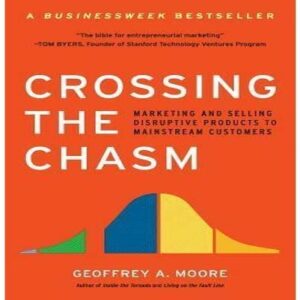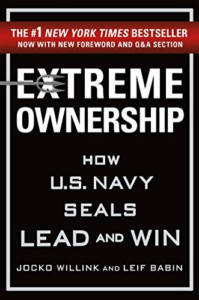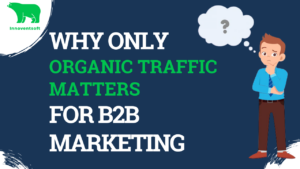We recommend these 5 books from our experience working in product marketing and content marketing teams. Over the years, we have launched products, run successful marketing campaigns, and trained 100s of product marketers. While there are several books to recommend, we stick to these because of their applications in the day-to-day life of a marketer.

The books are useful especially for B2B product marketers. With product marketing in focus, the books specifically cover some crucial areas of marketing: content, organization, customers, market, and team.
You can read,
-
Everybody Writes—for writing good content,
-
Zero to One—to scale your startup,
-
Crossing the Chasm—to increase your product’s user base,
-
Behind the Cloud—to understand the market, and
- Extreme Ownership—to build and lead a high-performance team
1. Everybody Writes - Ann Handley
Product marketing focus: Content
Originally published in 2014, Everybody Writes is one of the few books which does what the subtitle says: “Your Go-To Guide to Creating Ridiculously Good Content.” As a product or content marketer, you must be well aware of how good-quality content can improve brand awareness and attract quality leads.
In a content-driven world where anybody can stitch together a few words and make sentences, this book shows how to write content that your customers find valuable.
Ann Handley starts by making the idea clear: writing is a habit, not an art, and writing every day will improve it. As you move forward, you’ll understand the importance of good storytelling and how it will engage your target audience and build trust.
Having trustworthy content is important for both product marketing and content marketing because it will create more leads and customers. The tips shared in the book come from Ann’s life as a veteran marketer. She believes that traditional marketing techniques are outdated, and great content is the key to thrive in this digital era.
What will you learn?
- How to write better?
- Grammar rules for business (in a fun way).
- How to tell a story?
- How to write trustworthy content?
- What do marketers write?
- What content tools to use?
2. Zero to One - Blake Masters and Peter Thiel
Product marketing focus: Self/Organization
Zero to One is a call to action for all the startups on how to go from 0 to 1 and build the future. Peter Thiel points out that there are still avenues left where we can bring significant innovations, and this is critical when B2B marketing is getting tougher.
Bringing innovative products can help solve one of the biggest challenges today’s product marketing teams face, which is not knowing how to differentiate their product in an already saturated market. He mentions that tomorrow’s champions will not win by competing ruthlessly in today’s marketplace, but will stand apart by creating something unique.
For startups to bring innovative products, they must learn how to think for themselves and ask questions that will help to find value in any industry. Once they can identify the value proposition, it will be easier to launch the product or solution that will help the target audience solve their problems.
Scaling a startup is only possible once you convey your product’s USP through content marketing and product marketing. The advice for startups in this book comes from Peter’s experience as a co-founder at PayPal and Palantir Technologies, and they will surely help you come up with fresh business ideas.
What will you learn?
- The challenge of the future.
- Importance of finding a sweet spot between caution and taking risks with innovation.
- The ideology of competition.
- The power law.
- Does luck matter?
- The founder’s paradox.
3. Crossing the Chasm - Geoffrey Moore
Product marketing focus: Customer
There are two types of customers: early adopters and mainstream customers. While the early adopters are a tiny portion of your customers who are initial users of your product, the mainstream customers are the vast majority who will decide the fate of your company.
There is a “chasm” (wide gap) between the two types, and the book focuses on how to cross the chasm and ensure a smooth transition from early adopters to mainstream customers. Moore discusses selling disruptive innovations to the mainstream marketplace, and breakdowns customer segments into similar target-customer characteristics and scenarios.
The primary difference between early adopters and mainstream customers is that the latter will not adopt a product or solution unless it solves a pain point or increases productivity. Marketing techniques also differ for the two types; you need to provide a complete experience—like support, customization, consulting, and integrations—to appeal to mainstream customers.
Thus, for B2B product marketers and content marketers, positioning and messaging are vital to deliver the value of the product, which will help cross the chasm. The goal is to become a safer option for mainstream customers by adopting a customer-centric approach.
What will you learn?
- Discover the chasm.
- The target-customer scenario template.
- The whole product model.
- The competitive-positioning compass.
- The subtle art of positioning.
- Winning by comparison.
4. Behind the Cloud - Marc Benioff and Carlye Adler
Product marketing focus: Market
In the book, Carlye Adler, along with the co-founder and CEO of Salesforce.com, Marc Benioff, share the story of how Salesforce led the cloud computing revolution. Salesforce went from being a startup to sparking a $46-billion dollar industry, by putting customers at the core and strategically positioning themselves in the market.
He discusses how to launch your product, understand sequential growth, and build global capabilities into the product. B2B marketing teams including product and content marketers can take notes on the importance of thoroughly understanding the market, product positioning, and having multiple strategies.
Salesforce shows the importance of listening to the market. When they studied the market, they realized salespeople need software for different purposes, like billing, tracking, etc., and it’s harder for them to customize the software; they also had to look out for maintenance, support, and upgrades, and pay extra.
Salesforce read the market with utmost granularity and came up with a solution—an on-demand software with a user-friendly UI—organizing opportunities, contacts, and accounts. Since then, they kept on listening to the feedback from the market and changed the product based on them. Now, Salesforce is one of the best CRM software packed with features for sales and marketing people alike.
What will you learn?
- How to turn a simple idea into a high-growth company?
- How to use events to build buzz and drive business?
- How to develop products users love?
- How to launch your product and introduce your model to new markets?
- How to raise capital and create a return?
- How to create alignment?
5. Extreme Ownership - Jocko Willink and Leif Babin
Product marketing focus: Team
Jocko Willink and Leif Babin are former US Navy SEALs, and their thoughts on leadership come from their experiences on the battlefield. They acknowledge one thing: leadership is important at every level and it will determine the success or failure of a team. The leadership lessons shared in the book can apply to everyday business efforts, including marketing.
Every marketing team should have a leader who has a solid understanding of how to market, launch, and position a product. They should know how to put their team first and motivate them to be the best version of themselves. The book teaches about building a high-performance team and maintaining its performance, which you can apply to product marketing and content marketing as well.
A leader should be mindful of marketing goals, allocation of resources, decentralized planning, and selecting impactful campaigns. They need to foresee potential risks and take measures to mitigate them early, and delegate works efficiently to not waste any resources.
As a leader, it’s important to look for new information and make changes necessary to make sure that marketing efforts are going in the right direction. Briefing the team about a campaign and having discussions are inevitable to make everyone aware of all facets of the campaign. At the end of the day, product marketers have to ensure that they align every campaign with the actual value of the organization.
What will you learn?
- Taking responsibility for failures.
- Understanding the why.
- How to set clear priorities under pressure?
- Empowering your team.
- How to check your ego?
- Mitigating risks early.
Take notes
Product marketing and content marketing professionals still read these books because of the timelessness of the lessons taught in them. Once you identify the area you would like to focus on (content, organization, customer, market, or team), pick the recommended book and take notes along the way.
Some lessons are easy and you might already be practicing them; some will take time to internalize. One thing is certain: reading these books, taking notes, and revisiting them often will not go in vain. It will help you with a unique perspective on marketing, and better equip you to advance in your career and produce amazing results.










